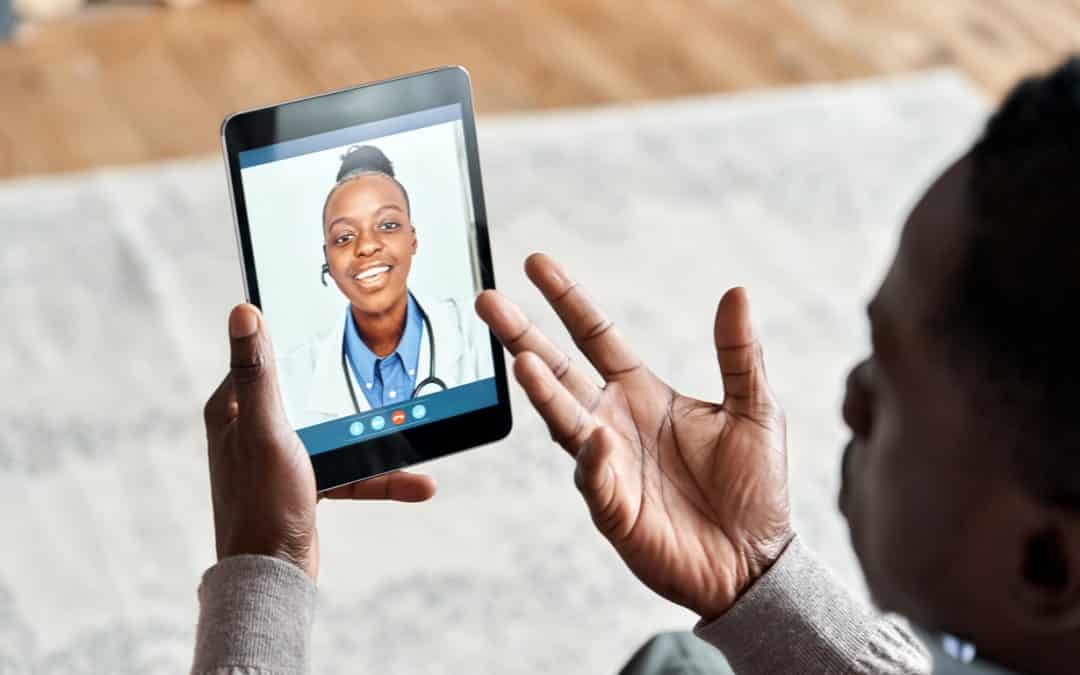The Advantages and Disadvantages of Telehealth Services
Technology is constantly changing the way we do business in a lot of industries and the health sector is not left out. With the outbreak of the Corona Virus pandemic, technology began and has since continued to play an important role in the medical sector. Technology brought about advancements like telehealth to the medical sector.
Telehealth is the provision of health care services remotely using technology and it includes everything from medical visits, to monitoring vital signs. Telehealth is broader than telemedicine as it includes training and continuing of medical professionals.
Telehealth is provided in three ways: synchronous – which is when the medical practitioner provides real-time medical service to the patient either with a computer or with a phone; asynchronous – this is recording messages to give to the doctor later; and remote patient monitoring – this is when vital signs such as weight and blood pressure are sent to the medical practitioner.
Telehealth is an innovation that has come with a lot of advantages. However, it has its disadvantages. Below are some of the advantages and disadvantages of telehealth:
Advantages of Telehealth Services
Medical practitioners can now reach more people
Before the development of telehealth, a lot of medical practitioners especially specialists could not reach many patients in other cities. Telehealth however provides the opportunity for medical practitioners to connect with patients in other demographics. This increases the volume of patients and consequently, the income of these medical practitioners.
Provides medical services to rural areas
A large percentage of medical practitioners work in urban areas. Telehealth makes it possible for medical services to reach people in rural areas who would ordinarily not have easy access t medical services either because of the time it would take to travel or lack of public transport to visit the medical service provider.
Reduces spread of contagious diseases
With telehealth, people no longer have to pay physical visits to the doctor or hospitals. This helps reduce the spread of contagious diseases to which patients could be exposed when they visit the doctor. Considering illnesses like the flu and coronavirus, telehealth helps patients to avoid potential exposure.
Reduction in cost of delivering and receiving medical services
Telehealth reduces costs for both the patient and the medical practitioner. A study shows that telehealth costs four times lower than it costs to pay a physical visit to the doctor. Firstly, it eliminates the cost of commuting to the hospital. Secondly, it allows patients to consult with medical practitioners before seeking out emergency services. This eliminates emergency services for issues that could have easily been resolved.
Convenience and time saving
Telecommunication increases convenience. It does not require anyone to travel as it enables connection from anywhere. It also saves time as no one needs to take as much time out of their day. The time spent commuting and waiting your turn at the hospital has been eliminated by telehealth. This helps patients who would otherwise need to miss work or school to be able to pay a visit to the hospital.
Easier to follow up with patients
A lot of times, people visit the hospital just for quick check-ins either post-surgery or after recovering from an illness. This can be quite a hassle especially for patients who need to rest to help with recovery and might not even be able to drive on their own. With telehealth, it is easy to follow up from you’re the comfort of your home and then decide whether it is necessary to go in for further evaluation.
Disadvantages of Telehealth Services
No federal regulation
No federal regulation guideline has been created by the federal government on the use of telehealth services. This has resulted in states making their different regulations to guide the use of telehealth services. There is a possibility that the lack of federal regulation makes it difficult for patients to access telehealth services from other states as their laws might conflict. This can defeat the main purpose of telehealth which is to reach patients in different areas.
Requires smart devices and internet access
These two things are required for both the medical practitioner and the patient. Although some things like booking appointments can be done over the phone, to access telehealth services, patients need to have a smart device and internet access. Poor internet connection could prolong the appointment or even cause it to be canceled.
Smart devices such as smartphones and laptops are also required to enable visual assessment and even to access the internet connection. This might not be an issue for the medical practitioner. However, a lot of people, especially those in rural areas do not have smartphones.
The assessment might be limited
Since assessment using telehealth services is done remotely, there is only so much that the medical practitioner can do since there is no physical examination. This assessment might thus be based solely on what the patient tells them or what they can see. Patients might not be able to properly explain things to medical practitioners and thus there might be a need for physical examination. Sometimes, the option for the patient to have a physical assessment from a nurse is provided. After that, a virtual meeting with a specialist doctor to go through the assessment results
Generational differences
The growth of telehealth is said to be majorly among the younger generation. Younger generations are open to telehealth because they have easy access to the internet and are tech-savvy. However, the older generation is not as open to this service. Older people who ought to benefit from this service since they might find it difficult to get to the hospital are not tech-savvy and so do not benefit from telehealth as much as they should.
Out of pocket costs
Insurance companies are catching up and are covering the cost of telehealth. However, some services might not be covered which might increase out-of-pocket costs for patients. To avoid overpaying, it is essential that you confirm whether telehealth services are covered under your health insurance plan.
If you are looking for life insurance, health insurance, alternatives to health insurance such as health share, or supplemental insurance, Vivna Insurance can help. One of our licensed and professional agents can help you shop for all of the right options for you and your family. Give us a call today at 866.793.2301 or email us at memberservices@vivna.net for a no-obligation discussion and quote.

